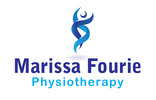 You know the feeling when your pubic pinchers just won’t co-operate, and a sudden sneeze or giggle leaves you red-faced and uncomfortably wet…? Think it’s only you? Think again. Recent studies have shown that up to 49 % of women suffers from stress incontinence.Unfortunately, even in today’s streetwise society, a shocking amount of ladies accept this as part of normal aging that nothing can be done about. Guess what – there is hope! There is no need for you to be a victim of incontinence. Understanding why The pelvic floor muscles support and hold all the organs in your pelvis and abdomen. Think about it as a sling stretching from your tailbone to your pubic bone. During pregnancy, a massive amount of weight from your growing uterus create constant pressure on these muscles, causing them to stretch out and weaken. Pregnancy hormones will also cause the ligaments in the area to become lax. With childbirth, the already taut muscles need to stretch even more, with many ladies ending up having them torn or cut as well. Then, as we age, our muscles loses elasticity, and keeping in wees and winds become more of a challenge. Menopause brings about hormonal changes that contribute to the problem. When this situation worsens, a prolapse may occur, and organs may literally start to protrude from, or “hang” out of the body. What can be done? The pelvic floor muscles can and should be retrained and strengthened. Unfortunately, once you have a prolapse, surgery is often the only option. It is therefore a good idea to prevent rather than to cure, and by doing regular pelvic floor strengthening exercises, you should be able to avoid surgery, and improve your quality of life considerably. For a proper assessment and assistance, visit a physiotherapist with special training in women’s health. Apart from advice and rehabilitation, they also use physical modalities to help improve your control and muscle strength. Like with any other muscle, the more you train it, the stronger it will become and the better your results will be. Who should proceed with caution? If you struggle with a spastic bladder, difficulty to urinate (micturition), experience pain during intercourse, or have any other chronic medical condition in your pelvic area, you should visit a healthcare professional to assist and monitor your retraining. How do I contract my pelvic floor muscles? The female pelvic floor has three openings: the ureter, the vagina and the anus. You should be able to contract these three separately, and then in conjunction. Contract the ureter by imagining “pinching” back urine. (Important: This should only be done once or twice when doing your pelvic floor exercises, especially if you struggle with a spastic bladder.) To contract the anus, you can imagine holding back a wind. The most important is the contraction of the vagina, as this is the area that takes the most strain. Contract by visualising the centre of your pelvic floor closing up and lifting towards your belly button. Simultaneously, visualise two magnets fixed on the insides of the palpable pelvic bones in the front waist area, and imagine them gently “pulling” towards each other. Hold this contraction for 5 to 10 seconds, and relax. If you can manage all contractions of the ureter, vaginal and anal areas separately, do them consecutively, starting from the tailbone, through to the pubic bone. Hold the contraction for 5 to 10 seconds, and relax. …and then what? Do the combined contraction as often as possible. Make it part of your daily routine, do it every time your phone rings, or when stopping at a red traffic light, or when hitting the “print button”, whatever it is that you do on a regular basis. You do not only strengthen the muscle itself, but also teach the brain to contract these muscles involuntarily in the long term. If you struggle with occasional incontinence, pelvic floor strengthening can make a dramatic difference in time. For mommies-to-be, a stronger pelvic floor will heal much quicker after birth. And for those of us that have already given birth – get them pelvic floors firmed up now!
0 Comments
Leave a Reply. |
AuthorMarissa Fourie is a physiotherapist in Stellenbosch with a special interest in musculoskeletal conditions, pediatrics, and post/prenatal health. Archives
March 2016
Categories
All
|
||||||

 RSS Feed
RSS Feed